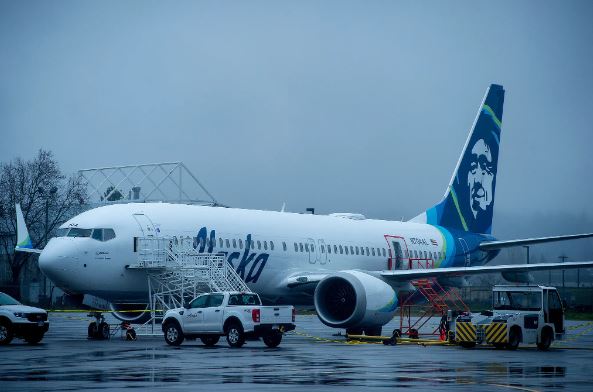In a worrisome turn of events, both United Airlines and Alaska Airlines have reported the discovery of loose parts on their Boeing 737 Max 9 jets. This revelation comes in the aftermath of a fuselage panel blowout during an Alaska Airlines flight on Friday, raising additional safety concerns about the Max 9 model.
Alaska Airlines had allegedly received three warnings about cabin pressure issues on the aircraft before the Friday incident, prompting the airline to decide that the Max 9 could no longer be utilized on flights to Hawaii. United Airlines disclosed on Monday that it had identified loose bolts in the panels, specifically in components known as door plugs, during inspections over the weekend. Door plugs are situated where an emergency exit door would be in aircraft with more seats.
The alarming incident on Friday involved a door plug suddenly detaching from an Alaska Airlines Max 9, causing a significant drop in cabin pressure. The ensuing chaos subjected passengers to intense wind forces, leading the pilots to swiftly return to the airport. Personal items, including the door plug itself, phones, and toys, were ejected from the aircraft through the hole in its side.
In response to the safety concerns, both airlines have initiated inspections of their Max 9 fleets. The Federal Aviation Administration (FAA) provided instructions to carry out these inspections, prompting cancellations of hundreds of flights as nearly 200 aircraft are grounded pending safety assessments. Alaska Airlines operated 65 Max 9 planes, constituting about 20% of its fleet, while United Airlines utilized 79 Max 9 aircraft, the highest among all airlines and about 8% of its fleet.
The FAA is actively overseeing the inspections, focusing on components such as door plugs, door elements, and fasteners. However, as of Monday, United Airlines was awaiting additional approval from the FAA to commence its inspections, while Alaska Airlines was seeking guidance from both Boeing and the FAA.
The National Transportation Safety Board (NTSB) is leading the investigation into the incident, concentrating on factors such as the installation and inspection of the door plug. Jennifer Homendy, the chairwoman of the NTSB, emphasized the need for a thorough review, including the examination of maintenance records, repair logs, and flight data recorder analysis.
While the incident did not result in serious injuries, it could have been catastrophic, particularly if the plane had been at a higher altitude. The investigation is evaluating whether the pressurization warning light could be linked to the door plug, and the FAA has specified that inspections will emphasize plugs, door components, and fasteners.
Kathleen Bangs, an aviation expert, expressed her belief that the investigation would likely reveal a door plug failure due to the condition of the relatively new plane. Typically, explosive decompression incidents occur on older planes with metal corrosion, whereas this almost-new aircraft suggests a probable issue with the door plug.
Boeing’s Chief Executive, Dave Calhoun, is set to address the company’s response and reaffirm its commitment to safety in a companywide meeting. Boeing shares experienced an 8% decline on Monday, while shares of Spirit AeroSystems, which manufactures the body for the 737 Max and other aircraft, dropped by 11%.
As the aviation industry grapples with the aftermath of this incident, it remains to be seen how swiftly and effectively the inspections and investigations will be concluded to ensure the safety of the Boeing 737 Max 9 fleet.

